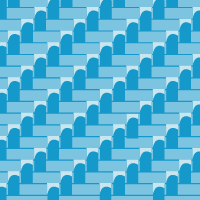Topic Editors

Advanced Carbon Fiber Reinforced Composite Materials, Volume II
Topic Information
Dear Colleagues,
This Topic, entitled “Advanced Carbon Fiber Reinforced Composite Materials, Volume II”, focuses on advanced composite materials such as carbon fiber-reinforced plastics (CFRP), which have gained the attention of different industries, such as aerospace, automotive and motorsports industries, which produce lightweight and high-performance components. Advanced composite materials, primarily governed by the properties of reinforcing fibers such as high strength and high stiffness characteristics, are characterized by their high potential in terms of stiffness/weight ratio, making them very attractive for structural applications in which low weight and high stiffness conditions have to be met. The present Topic aims to collect contributions on the advanced carbon-fiber-reinforced composite materials, as well as to review the state-of-the-art on these materials. The manuscripts of this Issue will focus on the most significant and promising manufacturing technologies, machining and joining processes, modeling, simulation, material characterization and failure mechanisms. A comprehensive overview of the most recent results and findings in the field of advanced composite materials will be provided.
Prof. Dr. Michela Simoncini
Prof. Dr. Archimede Forcellese
Topic Editors
Keywords
- processing of short, long and continuous fiber composites
- joining processes
- machining processes
- reinforced plastics
- carbon fiber
- modeling and simulation
- material characterization
- monitoring
- structural composites
- functional composites
- lightweight structures
- recyclable composites
- sustainable composites
- composite fabrication
- 3D printing
Participating Journals
| Journal Name | Impact Factor | CiteScore | Launched Year | First Decision (median) | APC | |
|---|---|---|---|---|---|---|

Fibers
|
3.9 | 7.0 | 2013 | 24.1 Days | CHF 2000 | Submit |

Journal of Composites Science
|
3.3 | 4.5 | 2017 | 14.7 Days | CHF 1800 | Submit |

Materials
|
3.4 | 5.2 | 2008 | 13.9 Days | CHF 2600 | Submit |

Polymers
|
5.0 | 6.6 | 2009 | 13.7 Days | CHF 2700 | Submit |

MDPI Topics is cooperating with Preprints.org and has built a direct connection between MDPI journals and Preprints.org. Authors are encouraged to enjoy the benefits by posting a preprint at Preprints.org prior to publication:
- Immediately share your ideas ahead of publication and establish your research priority;
- Protect your idea from being stolen with this time-stamped preprint article;
- Enhance the exposure and impact of your research;
- Receive feedback from your peers in advance;
- Have it indexed in Web of Science (Preprint Citation Index), Google Scholar, Crossref, SHARE, PrePubMed, Scilit and Europe PMC.


